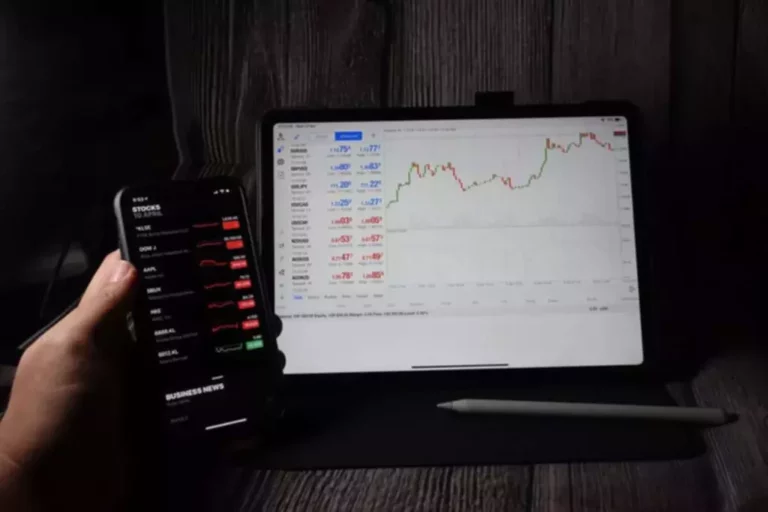In India, we now have share brokers like Share India making an attempt to propagate algo trading solutions in the retail section. HFT contributes to increased market liquidity by providing a relentless stream of purchase and sell orders, making it easier for merchants to execute trades at a fast pace and at competitive prices. HFT has become a major force in equity markets as a outcome of its substantial revenue potential from small, repetitive trades executed at blazing speeds. However, as competition intensifies and regulators intervene, the profitability of HFT has come beneath stress in recent years. HFT methods require complicated statistical algorithms coded by top programmers. Recruiting and retaining quantitative consultants What Is High-Frequency Trading and developers drives up compensation prices.
Advantages Of High-frequency Buying And Selling
Algorithmic trading, also called algo buying and selling, includes utilizing programmed instructions created by algorithms to carry out trades. These algorithms routinely assess market data, corresponding to worth, volume, and time, to execute trades primarily based on set criteria. The primary objective is to remove trading prejudice and capitalise on market opportunities precisely. Some widespread methods embody arbitrage, development following and statistical arbitrage. This technique has gained recognition for its potential to boost effectivity transaction costs and execute trades across a number of markets simultaneously.
Unlock Inventory Market Opportunities With Religare Broking
HFT leverages particular computer systems to attain the highest pace of trade execution possible. It may be very complex and, due to this fact, primarily a tool employed by massive institutional traders similar to investment banks and hedge funds. HFT corporations deploy a variety of algorithms optimized for different methods – such as market making, arbitrage, momentum trading, and so on. Machine learning and artificial intelligence are being incorporated to develop ‘adaptive’ algorithms that self-learn, evolve with changing market conditions, and execute extra complicated trades.
Benefits And Disadvantages Of Hft
HFT originated in the late 20th century as computerized buying and selling technology advanced and monetary markets grew in complexity. The origin of HFT was a response to develop techniques that might capitalize on short-lived opportunities by way of fast transaction execution. HFT performs an necessary function in trendy markets as it contributes to liquidity and pricing effectivity. One major benefit of HFT is its capability to rapidly capitalize on momentary worth anomalies. However, one limitation is that it could possibly exacerbate volatility in periods of excessive market stress due to the large order flows generated by HFT algorithms. Understanding each the origins and strategies employed in HFT helps market individuals higher navigate today’s extremely electronic monetary system.
What Are The Several Types Of Algo Trading?
High-frequency buying and selling offers several advantages, including enhanced liquidity, decreased bid-ask spreads, and improved market effectivity. These benefits contribute to more efficient markets and lower trading costs for all individuals. HFT corporations usually find their servers in close proximity to the trade’s matching engine to minimize back network latency additional. The time taken to execute a commerce is often measured in microseconds, allowing traders to benefit from fleeting market opportunities.
The major goal is to capitalize on small value discrepancies which will exist for very quick periods. HFT has turn into a critical part of modern trading, considerably influencing market dynamics. These short-term buyers, popularly known as high-frequency traders (HFTs), account for a substantial fraction of total fairness market trading volume. However, there might be fairly little recognized about how their buying and selling effects liquidity.
The Method To Implement Factor Investing Methods In Your Portfolio
Market makers play a vital position in facilitating smooth and environment friendly trading by making certain that there are patrons and sellers out there at all times. HFT market makers use refined algorithms to regulate their quotes rapidly in response to modifications in market conditions, similar to order move, volatility, and value movements. Market makers aim to capture small income on each commerce while mitigating danger publicity by quoting narrow bid-ask spreads and the ability to swiftly regulate their positions.
What Is The Origin Of High-frequency Trading?
The basic head-and-shoulders commerce sells brief on a neckline break or the primary pullback, if the opportunity arises. But the pattern is so well known that common entry levels can generate substantial whipsaws. Contrarians like to trade against head-and-shoulders short-sellers, and implement a big selection of shakeouts to drive them to cover positions. In a classic head-and-shoulders setup, we expect a inventory to break the neckline and fall a distance equal to the height of the top (middle high). This targets a decline to round 120 Rs/- for Company C.But we now have no assure the goal will be reached, so the setup works finest with a trailing stop loss.
In its early years, HFT was extremely profitable, permitting corporations to achieve market share quickly. By buying and selling forward of slower traders, HFT firms may benefit from value movements brought on by main orders. Their algorithms had been also higher at discovering liquidity and minimizing trading costs.
Aside from scheduled events, corporate actions like spin-offs, mergers, IPOs, and special dividends additionally cause short-term dislocations. A low-latency order routing community is required to enter orders on exchanges in microseconds. Direct market entry (DMA) order routing and good order routers are common technologies employed. Network connectivity by way of fiber optic traces, microwaves, and different means helps decrease communication delays. Learn how we select the right asset combine in your threat profile across all market circumstances. HFT provides numerous advantages that may improve market efficiency and liquidity.
Given the high quantity and high speeds in algorithmic trading methods like HFT, danger administration is extraordinarily necessary. One careless market move and you can face substantial losses that could be compounded by the large volume of trading concerned. Fortunately, the same subtle algorithms that make HFT potential also can allow you to handle risks and restrict downsides in your high-frequency buying and selling strategy. High-Frequency Trading (HFT) and algorithmic buying and selling (algo trading) are associated concepts, but there are some distinctions between the two. HFT is a specific kind of algorithmic trading that focuses on executing high-speed trades to take advantage of short-lived market opportunities. Algo buying and selling is a broader time period encompassing a variety of trading strategies executed using pc algorithms, together with each high-frequency and different kinds of automated trading.

Chanakya HFT has also established itself as one of many largest and most profitable HFT players in India. Though non-public, Chanakya discloses limited monetary data as it isn’t required to separate HFT outcomes from different operations. However, estimates indicate Chanakya likely generates over Rs 500 crore annually from its HFT and market-making actions. The firm actively trades on NSE, BSE, and MCX using good order routing and proprietary execution algorithms. Cloud computing can additionally be gaining traction among HFT companies to carry out computationally intensive tasks sooner whereas minimizing hardware investments.
- Periods of volatility and diverging prices throughout exchanges supply the most profit potential for HFT arbitrage strategies.
- These benefits contribute to extra efficient markets and lower buying and selling prices for all members.
- At the muse of high frequency trading are complex algorithms designed to trigger large volumes of transactions in response to the market reaching sure levels on predefined parameters.
- On that day, the Dow Jones Industrial Average plunged over 600 points in minutes earlier than rebounding virtually as shortly.
- Estimates recommend almost ₹7,000 crore in annual state and native tax revenues from HFT in India.
- This allows the firm to quickly send, execute, and course of trades in fractions of a second.
Using automated techniques, they will scan markets for info and reply faster than any human may. Some of the high-frequency buying and selling methods are market making, statistical arbitrage, event arbitrage, quote stuffing, tick buying and selling, index arbitrage and so on. High-frequency buying and selling prioritises the buying and selling quantity over time and executes trades that don’t even final for a fraction of a second. However, as high-frequency trading is considered one of the most advanced trading techniques, it requires a high stage of computing and algorithmic information. If you wish to understand more about algorithmic trading and its elements, you can visit the IIFL website and skim associated blogs. High-frequency trading believes that if the orders are high in number and are executed sooner than others, the net profits realised through multiple trades are larger.
Becoming a successful HFT trader takes dedication, technical skills, and substantial capital. The high-frequency trading (HFT) course of involves executing trades at excessive speeds and completing a lot of transactions rapidly. Because of its complexity, it is often used by institutional buyers like hedge funds and banks. Using complex algorithms, high-frequency merchants spot rising tendencies in milliseconds. To navigate the complexity of trading, you can get assistance from Kotak Securities, a good agency known for its expertise and valuable guidance. These buying and selling algorithms leverage complicated mathematical models and huge amounts of historical information to establish profitable buying and selling opportunities and execute trades effectively.
It is characterised by its lightning-fast execution, often measured in microseconds, and the ability to analyse huge amounts of market knowledge in real-time. Now that you know what algorithmic trading is, let us look at high-frequency buying and selling. HFT makes use of algorithms to reap the benefits of opportunities that last for an infinitesimal interval. In a time period that will span for a couple of milliseconds, the algorithm might capitalise on miniscule worth motion. So, in simple words, it sends commerce orders to the exchange at instantaneous speeds. This type of trading allows merchants to make immediate trades, which in any other case wouldn’t have been potential because of the limitations of our perceptual and motor mechanisms.
Read more about https://www.xcritical.in/ here.
